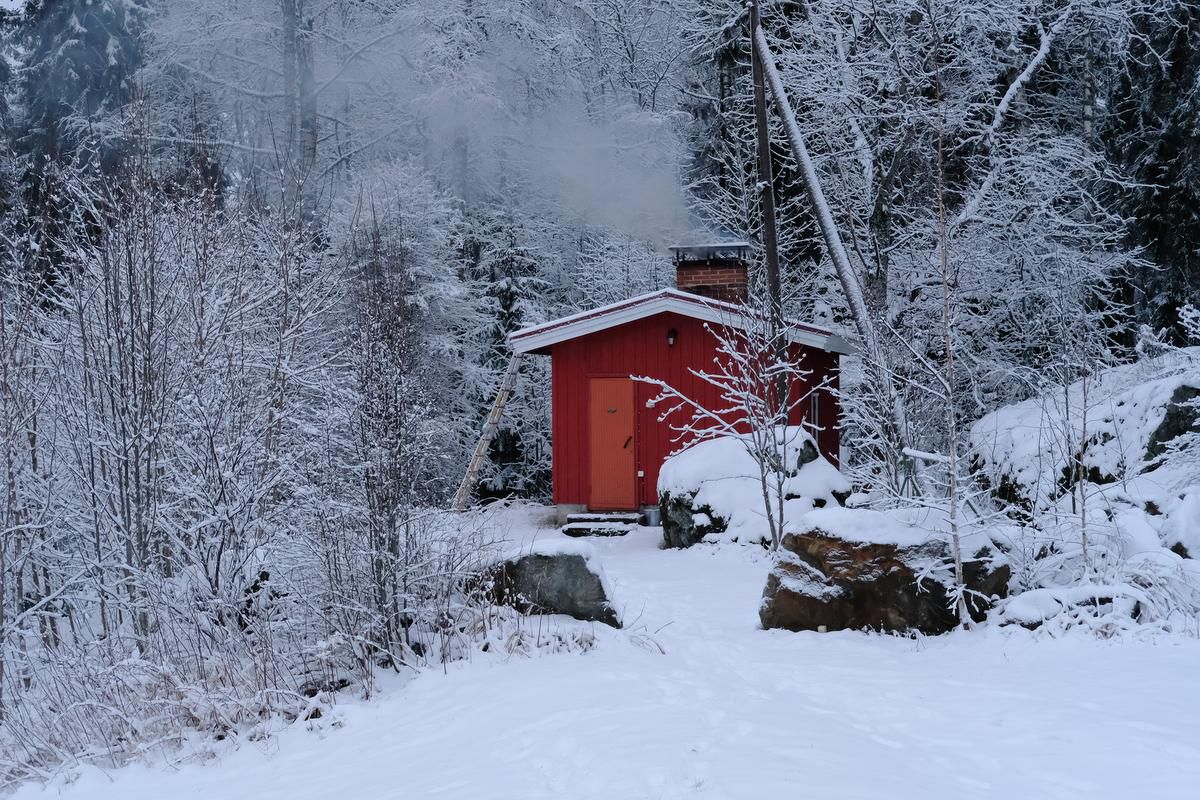[ad_1]
You can hear whooper swans from a long way off. I stepped out of the forest to find 50 or 60 of them waddling and warbling in a farmer’s field, flexing their huge wings in the cold air. Their squabbles sounded like strangled clarinets, an orchestra tuning down instead of up. I’d followed their cosy cacophony through the trees. It was early November 2019, and the birds were gathering strength for a long sojourn south. I had just arrived in Finland.
If spying on swans while your eyebrows freeze doesn’t sound like a typical holiday, well, it wasn’t. I was in Finland for a month-long residency at Arteles Creative Center, located about three hours north of Helsinki. Located on the grounds of an old school, the centre consists of two long buildings. One has a bronze plaque commemorating Frans Eemil Sillanpää, the only Finn to win the Nobel Prize for Literature — he was born in nearby Hämeenkyrö when it was part of the Russian Empire, and went to school here. There were 13 of us at Arteles, artists and writers from all over the place: Brazil, Spain, South Africa, South Korea, Australia, and the United States. I was the only Canadian, although I arrived to find a can of Quebec maple syrup in the fridge, a welcoming gift from a previous guest.
I had prepped for my Finnish trip by diving into Tove Jansson’s “The Summer Book,†a wonderful novel about a six-year-old living on a tiny island with her grandmother. Six-year-olds all over the world know Jansson for conjuring up the Moomins, a family of hippo-like trolls whose adventures unfold in a series of comics and children’s books. Their gently existential troubles are summed up by a beloved scene from the comics, in which Moomintroll grumbles that he doesn’t want to be famous: “I only want to live in peace and plant potatoes and dream!â€
Arteles is more or less designed for living in peace and dreaming, although the fields surrounding it are for wheat, not potatoes. I strolled through them most mornings, before doing battle with my own unfinished novel. During orientation we had been assured that we were allowed to walk in the fields and forests — the Finns call it jokamiehenoikeus, or “freedom to roam.†So I happily split my time between writing and roaming. I watched songbirds dart and connive among burnt-out sunflowers, took shortcuts through stands of birch tapestried with moss, and admired brightly painted beehives beside the fields. I photographed a wizened log bristling with bright orange mushrooms, fit for a fairy tale. Each night ravenous frosts ransacked the landscape, and the fields glittered with ice crystals.
En route to the residency, I had spent a few days in Helsinki. Though November is not exactly high tourist season, it’s a wonderful time to indulge in a bowl of salmon soup at Kauppatori market square, or shop for lingonberries or reindeer hides at the stalls outside. Finland’s capital is a city of extraordinary churches — from the unmissable cathedral towering over Senate Square; to the subterranean grandeur of Temppeliaukio Church, hollowed from solid stone; to Kamppi Chapel, where curving wooden walls make you feel as though you’re standing inside a guitar. The architecture of Helsinki’s libraries is equally marvellous. The National Library of Finland is a sumptuous temple with shelves held aloft on Corinthian columns, while Oodi, which opened in 2018, is a technological showboat — shaped like a ship — where books are ferried around by autonomous robots.
In comparison, the library at Arteles was considerably more modest, composed mostly of books left behind by previous residents. There were no robots, but there was a closet stocked with art supplies, another full of musical instruments, as well as a recording booth. My fellow residents and I shared our work and our worries (the Australians were keeping an eye on the bushfires back home), and took turns making coffee and cooking dinner. We sampled Karelian pies, smoked trout, and salted licorice ice cream. About once a week we’d visit the public sauna in Hämeenkyrö, where we simmered in the steam like beets before plunging into an icy lake.
There was a small sauna at Arteles too, and nearly every evening someone would fire up its wood-burning stove. The rustic red building was just big enough to hold half a dozen of us, and we’d alternate sitting on the highest bench, where the heat gets most intense. In the sauna I felt both drowsy and attentive, fully attuned to the fire’s crackle and hiss. Each time someone splashed fresh water over the heater it whipped upwards through the room as steam, swelling and strengthening, almost roasting our skin. It was fiercely soothing. We’d linger as long as we could, taking turns running out into the winter night to lie naked in the snow.
Lying on my back in the snowbank, looking up into falling flakes and stars, I felt weightless. Steam rising from my skin chased the sauna’s thin plume of smoke up into space. There was nothing between me and Orion. I remember thinking: Have I ever been this outdoors before? As the numbness receded, I became aware of the snow melting beneath my body. An intense prickliness, like lying on a bed of needles. I retreated back into the sauna, warming up so I could brave the snow again. Each blast of steam and stars made me feel more certain that, like the swans, I’d find my way back to Finland.
[ad_2]
Source link


/https://www.thestar.com/content/dam/thestar/life/travel/2021/02/06/take-a-wander-through-finlands-breathtaking-ravenous-frosts-with-canadian-poet-matthew-hollett/_1_finland_photo_credit_matthew_hollett.jpg)
/https://www.thestar.com/content/dam/thestar/life/travel/2021/02/06/take-a-wander-through-finlands-breathtaking-ravenous-frosts-with-canadian-poet-matthew-hollett/_4_finland_photo_credit_kuvio.jpg)
/https://www.thestar.com/content/dam/thestar/life/travel/2021/02/06/take-a-wander-through-finlands-breathtaking-ravenous-frosts-with-canadian-poet-matthew-hollett/_5_finland_photo_credit_matthew_hollett.jpg)
/https://www.thestar.com/content/dam/thestar/life/travel/2021/02/06/take-a-wander-through-finlands-breathtaking-ravenous-frosts-with-canadian-poet-matthew-hollett/_7_finland_photo_credit_christos_oikonomou.jpg)



